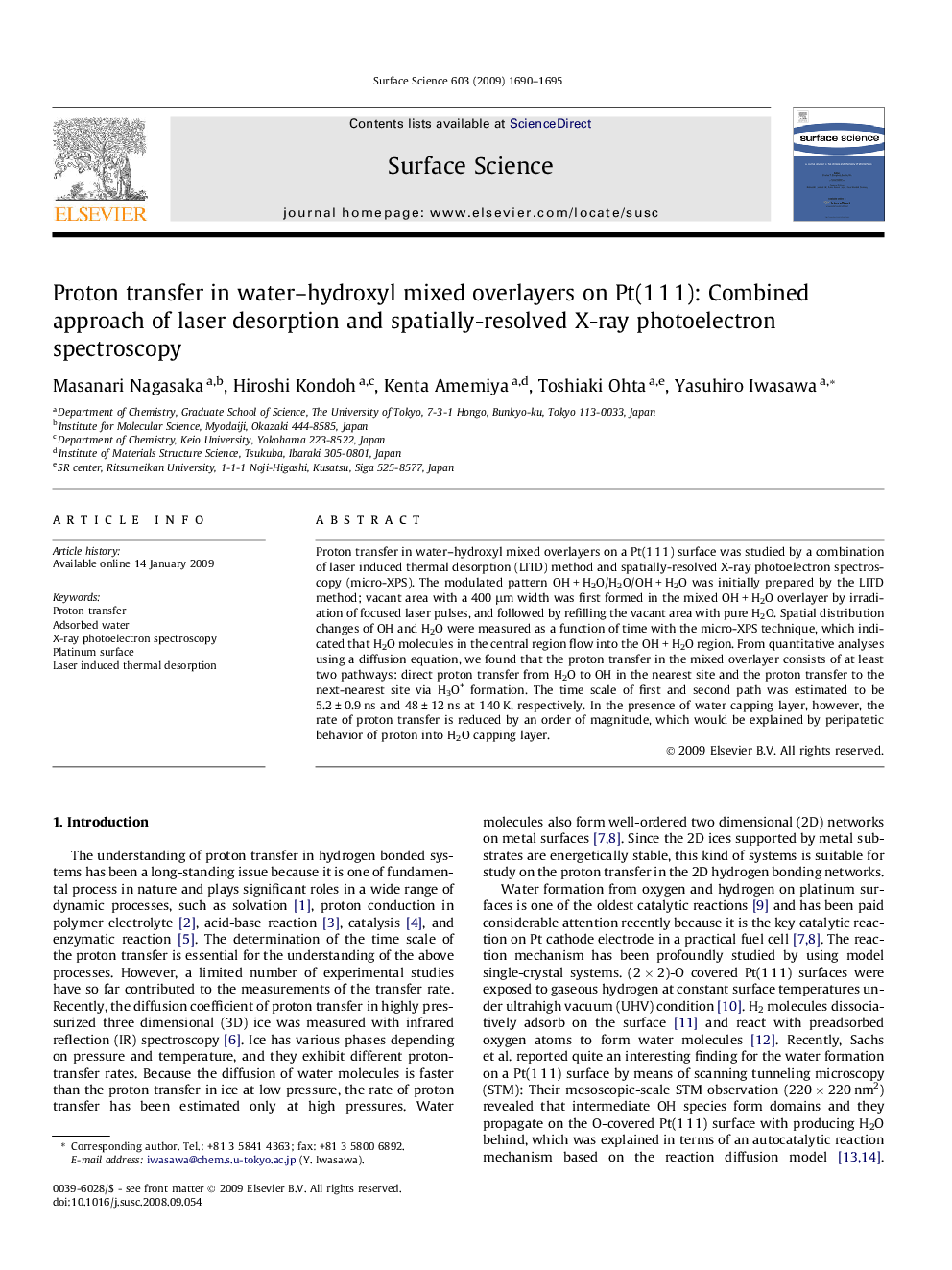| Article ID | Journal | Published Year | Pages | File Type |
|---|---|---|---|---|
| 5424227 | Surface Science | 2009 | 6 Pages |
Abstract
Proton transfer in water-hydroxyl mixed overlayers on a Pt(1 1 1) surface was studied by a combination of laser induced thermal desorption (LITD) method and spatially-resolved X-ray photoelectron spectroscopy (micro-XPS). The modulated pattern OH + H2O/H2O/OH + H2O was initially prepared by the LITD method; vacant area with a 400 μm width was first formed in the mixed OH + H2O overlayer by irradiation of focused laser pulses, and followed by refilling the vacant area with pure H2O. Spatial distribution changes of OH and H2O were measured as a function of time with the micro-XPS technique, which indicated that H2O molecules in the central region flow into the OH + H2O region. From quantitative analyses using a diffusion equation, we found that the proton transfer in the mixed overlayer consists of at least two pathways: direct proton transfer from H2O to OH in the nearest site and the proton transfer to the next-nearest site via H3O+ formation. The time scale of first and second path was estimated to be 5.2 ± 0.9 ns and 48 ± 12 ns at 140 K, respectively. In the presence of water capping layer, however, the rate of proton transfer is reduced by an order of magnitude, which would be explained by peripatetic behavior of proton into H2O capping layer.
Keywords
Related Topics
Physical Sciences and Engineering
Chemistry
Physical and Theoretical Chemistry
Authors
Masanari Nagasaka, Hiroshi Kondoh, Kenta Amemiya, Toshiaki Ohta, Yasuhiro Iwasawa,
